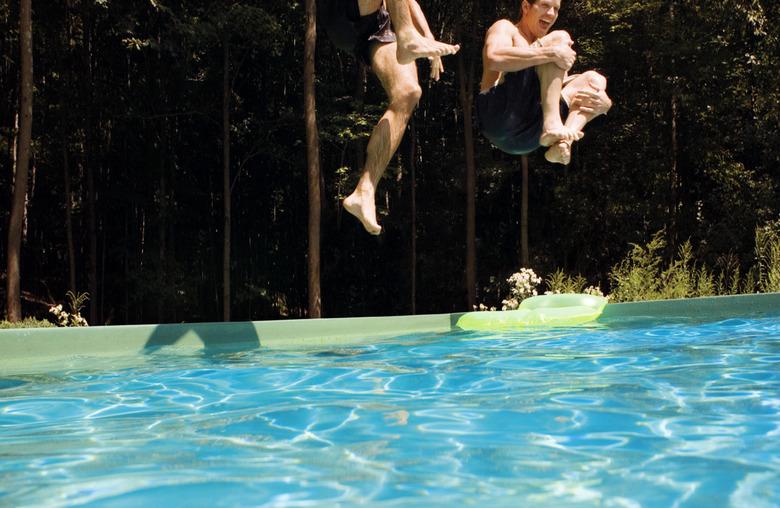How To Insulate An Above-Ground Pool
People usually use swimming pools during warm weather, so you may not think insulation would be needed for an above-ground pool to keep the water at a bearable temperature. But although an above-ground pool is warmed by the sun's rays during daylight hours, heat can escape at night when the temperature drops. Even if the heat loss is slight, it may make the water temperature unpleasantly cool by morning.
The easiest way to keep your pool at a consistent temperature is by simply adding insulation to its outside walls. Pool insulation is sold in large rolls of foam material that resembles packing material or bubble paper. The air pockets in the bubbles create a barrier between the wall of the pool and the outside air, thereby preventing heat transfer from the pool to the outside air. Insulating your pool can make morning swimming much more pleasant, and it can also extend the swimming season in colder climates by a few weeks.
Quite a lot of heat escape from the surface of the pool, so to get the maximum benefit, it's important to also buy an insulated surface blanket to cover the top of the above-ground pool at night.
Things Needed
-
Tape measure
-
Pool insulation
-
Insulation clips
-
Utility knife
-
Water surface blanket
Tip
If you are willing to spend extra money, build a deck with walled sides around your pool. The decking will shield your pool from the wind, and the side walls can be insulated with standard fiberglass or rigid foam insulation panels.
1. Measure the Pool and Purchase Supplies
Measure the outside walls of your pool from top to bottom, and measure the circumference of the pool. Use these measurements to purchase an adequate amount of insulation from a pool accessories store. Describe your pool to the store clerk; he will have insulation specifically designed for above-ground pools. Buy clips that will fit the frame on your pool. Also, purchase a pool surface blanket to fit your pool. You can find these blankets in several different sizes. Purchase one that fits over the whole surface of your pool.
If you are buying your supplies online, carefully check sizes before ordering. And make sure the insulation roll is intended for use around the outer walls of your pool. Some products are designed to insulate the space between an inner vinyl liner and metal walls of a frame pool.
2. Apply the Pool Insulation
Roll insulation can usually be applied in one large piece all around the outside circumference of the pool, but if it makes handling easier, you can cut it into smaller lengths using a utility knife. Try to arrange the insulation so the seams fall over the frame members, where they can be clipped securely.
Use clips specifically designed to secure the insulation to the frame members on the pool. These clips vary in size and are slipped over the frame to "pinch" the insulation in place. Take your time during this process to make sure the insulation fits tightly against the pool walls.
3. Use a Surface Blanket
Place your water surface blanket on top of the water during the evening hours or at any point when the temperature starts to drop. The blanket will help keep heat from escaping when the pool isn't in use. Most surface blankets also have clips to secure the blanket around the edges.
Tip
Some experts have concerns that this kind of wrap-around insulation can trap moisture between the insulation and the metal pool walls, causing rust and other problems. They recommend a different manner of insulation, in which insulation is glued to the inside surface of the metal walls so it is between the vinyl liner and the walls. This may be a good option if you are installing your pool for the first time, or if you have to drain the pool for maintenance.


